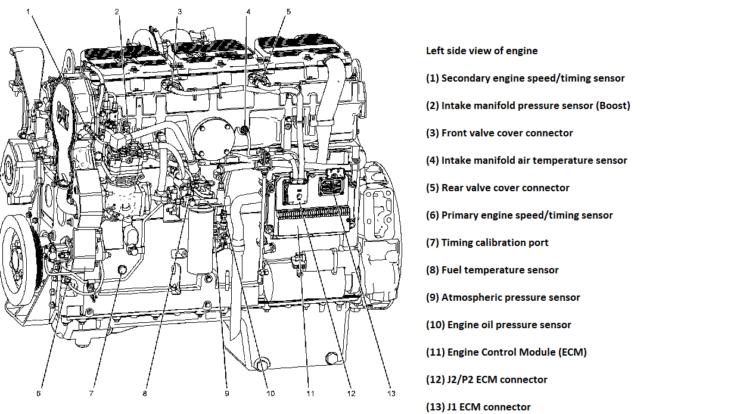Is it safe to drive with VDC off? It’s a question that has been debated by drivers for years. VDC, or Vehicle Dynamics Control, is a safety feature that helps to keep your car stable and in control, especially in slippery or dangerous driving conditions.
But what happens when you turn VDC off? Is it really safe to drive without it?
In this article, we’ll take a closer look at VDC and explore the potential consequences of driving with it turned off. We’ll also discuss the legal implications of driving with VDC disabled and provide tips for responsible driving practices related to VDC.
Vehicle Dynamics Control (VDC)
Vehicle Dynamics Control (VDC) is a computerized system that helps maintain vehicle stability by controlling the brakes and engine power. VDC is designed to prevent loss of control, such as skidding or spinning, by detecting and responding to changes in the vehicle’s motion.
Purpose and Function of VDC
VDC uses sensors to monitor the vehicle’s speed, steering angle, yaw rate, and lateral acceleration. When the system detects that the vehicle is losing control, it intervenes by applying brakes to individual wheels and reducing engine power. This helps to keep the vehicle on its intended path and prevent a crash.
Potential Consequences of Driving with VDC Turned Off
Driving with VDC turned off can increase the risk of losing control of the vehicle, especially in slippery or adverse conditions. Without VDC, the vehicle is more likely to skid or spin if the driver makes a sudden maneuver or encounters a patch of ice or snow.
If you’re looking for a stylish and versatile pickup truck, the 2022 Honda Ridgeline Black Edition is a top contender. This special edition model boasts a sleek blacked-out exterior and a premium interior, making it a standout on the road.
Whether you’re hauling gear for work or hitting the trails for adventure, the Ridgeline Black Edition is ready to take on any challenge.
Situations Where VDC is Particularly Beneficial
- Slippery roads (e.g., rain, snow, ice)
- Sudden maneuvers (e.g., evasive actions)
- High-speed driving
- Towing or carrying heavy loads
Situations Where VDC May Be Detrimental
- Off-road driving (e.g., rock crawling)
- Track driving (e.g., drifting)
- Low-speed maneuvers (e.g., parallel parking)
Safety Implications

Driving with VDC off significantly compromises vehicle stability and control, increasing the risk of accidents and injuries. VDC is a crucial safety feature designed to prevent loss of control, especially in slippery or hazardous conditions.
Increased Risk of Accidents, Is it safe to drive with vdc off
- VDC helps maintain traction and prevent skidding, reducing the likelihood of spin-outs and rollovers.
- Studies have shown that disabling VDC increases the risk of single-vehicle accidents by up to 30%.
Increased Risk of Injuries
- Accidents involving vehicles with VDC off tend to be more severe, resulting in higher injury rates.
- VDC can mitigate the impact of collisions by stabilizing the vehicle and preventing excessive yaw.
Legal Considerations
Driving with VDC off can have legal implications depending on the jurisdiction. In some areas, it may be illegal or restricted.
Laws and Regulations
In the United States, there are no federal laws specifically prohibiting driving with VDC off. However, some states have laws that may apply to such situations. For example, California Vehicle Code Section 26453(a) states that “no person shall operate a motor vehicle upon a highway without having a properly functioning vehicle dynamic control system.”Other
jurisdictions may have similar laws or regulations. It is important to check the local laws before driving with VDC disabled.
Legal Consequences
Drivers who have been caught driving with VDC off may face legal consequences. These consequences can include fines, license suspension, or even jail time in some cases.In one case, a driver in California was convicted of vehicular manslaughter after he crashed his car while driving with VDC off.
The court found that the driver’s decision to disable VDC was a contributing factor to the crash.
If you’re searching for a spacious and reliable pickup truck, the 2022 Honda Ridgeline Black Edition is an excellent choice. With its rugged exterior and versatile interior, this vehicle is perfect for both work and play. The Ridgeline also boasts impressive fuel efficiency, making it a practical option for everyday commutes.
Vehicle Performance: Is It Safe To Drive With Vdc Off
When VDC is disabled, the vehicle’s handling, braking, and acceleration characteristics are significantly altered. This is because VDC plays a crucial role in optimizing these aspects of vehicle performance, especially in challenging driving conditions.
VDC enhances vehicle performance by:
- Improving traction:VDC uses brake control and engine power management to distribute torque to the wheels with the most grip, improving traction on slippery surfaces.
- Reducing oversteer/understeer:VDC detects and corrects oversteer (when the rear of the vehicle slides out) and understeer (when the front of the vehicle slides out), helping the driver maintain control.
- Optimizing braking distance:VDC modulates brake pressure to each wheel, reducing stopping distance and improving stability during emergency braking.
Driver Responsibility
When driving with VDC off, the onus of maintaining vehicle stability and safety falls entirely upon the driver. It is crucial to recognize the heightened responsibility and exercise caution and vigilance at all times.
Disabling VDC carries ethical implications as well. Drivers must consider the potential risks their actions pose to other road users. By choosing to drive without VDC, they assume a greater risk of losing control and causing accidents that could harm or endanger others.
Responsible Driving Practices
- Only disable VDC in controlled environments, such as closed tracks or off-road settings, where the risks to others are minimized.
- Be fully aware of the vehicle’s capabilities and limitations, and drive accordingly.
- Maintain a safe following distance and anticipate potential hazards.
- Avoid aggressive driving maneuvers, such as sudden acceleration or braking.
- If conditions deteriorate or the driver feels uncomfortable, re-engage VDC immediately.
End of Discussion
Ultimately, the decision of whether or not to drive with VDC off is a personal one. However, it’s important to be aware of the potential risks and benefits involved before making a decision. If you’re ever in doubt, it’s always best to err on the side of caution and keep VDC turned on.
Clarifying Questions
What is VDC?
VDC, or Vehicle Dynamics Control, is a safety feature that helps to keep your car stable and in control, especially in slippery or dangerous driving conditions. It works by using sensors to monitor the car’s speed, steering angle, and yaw rate.
If the car starts to skid or lose control, VDC will automatically apply the brakes and adjust the engine power to help bring the car back under control.
Is it safe to drive with VDC off?
It is generally not recommended to drive with VDC off, as it can increase the risk of accidents and injuries. However, there may be some situations where it is necessary to turn VDC off, such as when driving on a race track or in deep snow.
What are the legal implications of driving with VDC off?
In some jurisdictions, it is illegal to drive with VDC off. In other jurisdictions, there are no specific laws prohibiting driving with VDC off, but drivers may be held liable for any accidents or injuries that occur as a result of driving with VDC disabled.







